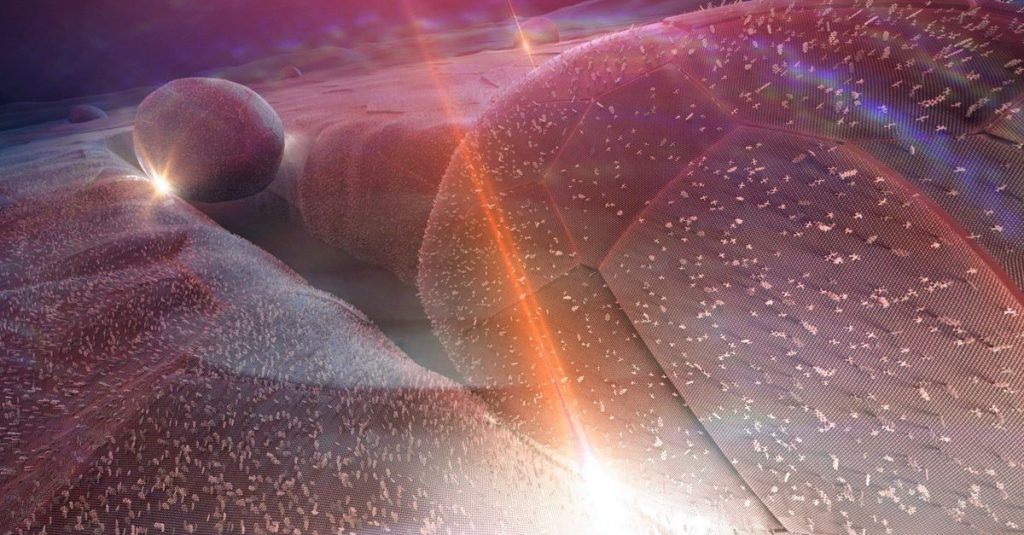Infrared rays, which are difficult to measure, can be converted into visible light with a smart device by vibrating molecules. This technology, which can facilitate the identification of chemicals, among other things, It was presented on Friday in the trade magazine Science.
Invisible infrared radiation, which can be felt as heat, consists of electromagnetic waves, just like visible light. The difference is that the frequency of visible light is higher than that of infrared radiation.
“We have good cameras that are sensitive to visible light,” says Ewald Verhagen, professor of nanophotonics at the Amulf Research Institute, Amsterdam. Current infrared detectors, especially for low frequencies, are less sensitive and more expensive. While this radiation spectrum is interesting. For example, it is used for security scanners at airports and for chemical and biological identification (infrared spectroscopy); each substance absorbs certain parts of the infrared spectrum. This results in a “fingerprint.”
golden balls
To better measure this radiation, the Amolf researchers and their international colleagues have developed a device that converts infrared radiation into more measurable visible light. For this they use a nanostructure consisting of gold spheres of a size of a few millionths of a millimeter, which, in equal minutes, fall into a golden groove. The gap between this ball and the groove contains specially selected particles. “The nanostructure ensures that the infrared radiation that falls on it is focused in that gap,” Verhagen says. “Then the infrared rays make the molecules vibrate.” At the same time, the laser provides energy to convert the vibration of particles into visible light.
“The particles, just like a tuning fork, vibrate at certain frequencies,” Verhagen says. Only infrared rays of the same frequency are converted into visible light. This means that by choosing (or designing) particles that vibrate at a different frequency, you can develop devices that make other infrared frequencies visible.
Now that it’s been shown to work, researchers will make the technique more efficient. “One of our goals is to make it applicable to infrared radiation at lower frequencies than is currently possible, because it is difficult to measure,” Verhagen says. “We’re working with chemists who can develop molecules that are suitable for this.”
in a Science A second independent article appeared simultaneously on Friday which have a similar result with a slightly different nanostructure.
A version of this article also appeared in NRC Handelsblad on December 4, 2021
A version of this article also appeared on NRC on the morning of December 4, 2021

“Coffee buff. Twitter fanatic. Tv practitioner. Social media advocate. Pop culture ninja.”











More Stories
Which can cause an increase in nitrogen.
The Central State Real Estate Agency has no additional space to accommodate Ukrainians.
The oystercatcher, the “unlucky national bird,” is increasingly breeding on rooftops.